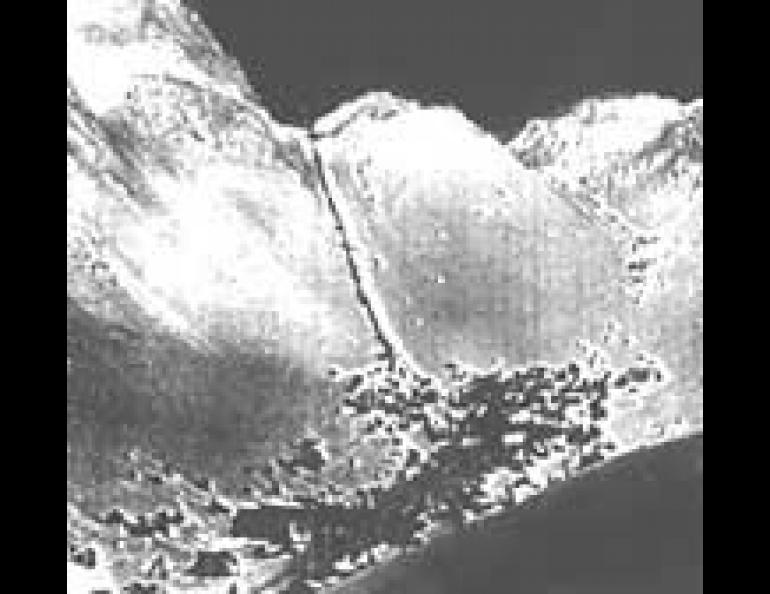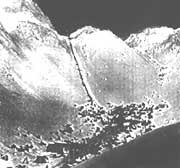
The Golden Stairs Of Chilkoot Pass
The 1890s were a period of deep crisis in the United States. The economic crash of 1893 precipitated the worst depression the country had endured since the Revolution. The American Dream had turned into a nightmare for many immigrants on the eastern seaboard, and the promise of free land and wealth for all in the Golden West was becoming a reality of poverty for most. What this country needed was a good gold rush. It came during the winter of 1897-98, but except for a very few, it did not develop into what the doctor ordered.
History records that the first paydirt on the Klondike River, a tributary of the Yukon, was made by Robert Henderson in 1896. (In the end, Henderson profited little from the strike because he made it known that he did not want his Indian wife's relatives staking claims. They retaliated by making the big strike near his initial find and cutting him out.)
When word of the bonanza leaked out, the rush was on. The rich man's way to reach the gold fields was to travel entirely by water to near the mouth of the Yukon at St. Michael, and then upstream to Dawson. But this meant a journey of over 3200 miles from Seattle, and time was all-important. Any fool could see from a map that the trip into the Canadian Interior over the coastal mountains from Skagway was much shorter, and therefore faster and less costly. It was a mistake that thousands would pay for with their fortunes, families, and often with their lives.
From the salt water at Skagway and nearby Dyea (which no longer exists), it is only 2 miles--the distance of a modern marathon--across the mountains to Lake Lindeman in Canada, a headwater of the Yukon River and the beginning of the downstream float to Dawson. But those 27 miles included Chilkoot Pass, and the trail, where it could be called that, was unlike any run by today's marathoners with their designer shorts, running shoes and flapping numbers.
The stream of men on the trail at any time amounted to a human traffic jam. Prospectors, eager to fill their pockets with nuggets and return home before the Yukon winter set in, tried packing in bicycles and other absurdities, only to throw them away before they'd scarcely begun. Horses were found to be more trouble than they were worth, particularly if they wanted to be fed, and hundreds were worked and starved to death.
The majority of those who made it over the pass did so by carrying their supplies on their backs. And this did not mean a single trip up the 1500 or so steps in the "Golden Stairs" which marked the final assault on the menacing rocks of the summit. It meant shuttling seven or eight hundred pounds of gear over in relays, in quantities as large as one man could carry at a time. Midway through the rush, the Royal Canadian Mounted Police enforced the policy (which undoubtedly saved many lives) that each man enter Canada at the summit with at least 1150 pounds of food and gear--enough to winter over at least once. It has been estimated that some of the prospectors must have walked a total of 1000 miles to get all of their gear over the "marathon" distance of 27 miles from Dyea to Lake Lindeman.
Some men could afford to hire local natives to carry their gear, and for those who waited, tram lines were eventually built. In any event, "getting there" was not half the fun, but was instead the most costly and dangerous part of the entire venture. Accidents, scurvy, epidemics of spinal meningitis and smallpox, winter cold and avalanches claimed an uncounted number of lives.
Graphic examples of the frustration and discouragement of many who didn't make it over the pass lay in the huge stockpiles of supplies wasting on the docks at Dyea and Skagway. The desperate men who had brought them that far but could go no further in August of 1897 tried in vain to sell them to newcomers, but the glut was complete. Later at Dawson in October of that year, hungry men who had "made it" would have stood in line to pay $400 in gold for a barrel of flour from those docks.





